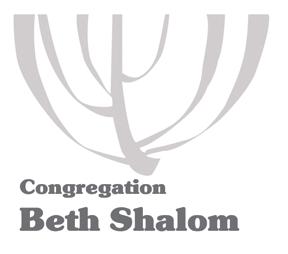
Congregation Beth Shalom announced last week that its board of directors has approved a recommendation to build a sacred space at its facility at 14300 Lamar Ave. in Overland Park.
“Our goal is to build an attractive, inspiring and cost effective space that will serve our needs, week in and week out, well into the future,” wrote Beth Shalom President Richard Simon in the congregation’s email to members.
The building opened in 2006 strictly as a facility to house its preschool, religious school and administrative offices. Shabbat services continued to be held at its 95th Street and Wornall location in Kansas City, Missouri. However, as the Wornall building began deteriorating it was determined it was too costly to maintain, and all of the Conservative synagogue’s functions moved to the Lamar location in July 2011. The Wornall building was sold in 2013 and has since been demolished.
Beth Shalom currently holds most of its religious services in Goldsmith Hall, the congregation’s multipurpose area. Simon said as many as 450 people have attended services in Goldsmith Hall.
Simon said Beth Shalom’s Location Task Force has been analyzing the need for a sacred space for at least four years. The task force unanimously determined in January that it was ready to move forward with a recommendation to build a sacred space at Lamar, and the congregation’s full board approved it earlier this month. Members of the congregation were informed Feb. 15.
“We’re really at the very beginning. We’re taking our next baby step in the process,” Simon said.
“We’ve been very happy with the configuration we have right now where we have our Goldsmith Hall, which is our multipurpose room. The one downfall is of course we can’t have our High Holiday services there,” he continued.
Simon said the task force has the request for proposal information ready and will be conducting a nationwide search for an architect among the top firms that design synagogues. After proposals are submitted to the task force, three or four firms will be selected for an extensive interview. Once an architect is selected, that firm will conduct a programming and building usage analysis that will require substantial congregational input.
“I assure you that during that process, we will have opportunities for everyone to give their input if they so choose,” Simon’s email informed members.
An architect has already been involved in the decision to create a sacred space, Simon said, as the congregation needed to discover whether such an addition was feasible at its current space.
“The other thing the committee was looking at was should we move or should we do something else, and the decision was we will stay at Lamar and plant our roots,” Simon said in an interview with The Chronicle this week.
Beth Shalom has approximately 655 member units. Costs will help determine exactly what type of sacred space the congregation decides to build. For example, a decision has not yet been made whether the space will be large enough to serve the congregation during the High Holidays. While approximately 100 to 125 people attend services on a Shabbat without a special event such as a Bar or Bat Mitzvah, Simon said 1,000 people typically attend High Holiday services. High Holiday services are now being held at the Jewish Community Campus in several rooms — The White Theatre, the social hall, chapel and some classrooms in the Child Development Center.
“Depending on cost, we do not yet know if we will build a space that is large enough to accommodate all of us for the High Holidays, or if we will continue to use an alternative location for those three days,” Simon said.
In addition to the sacred space, Simon said expanding the current kitchen is a possibility, as is adding a meat kitchen to the site.
There is no set time frame to select the architect or make any final decisions.
“Maybe in the next six months, but we don’t have anything in concrete,” Simon said.
Monies from the sale of the Wornall building were used to pay down the congregation’s debt, so funds need to be raised for the new addition. Fundraising plans will take shape once decisions have been made regarding the design.
“We will need to know how much we need to raise before we can go out and ask people for money,” said Simon. “We will not begin building or renovating until we have substantially all the pledges we need to pay for that work.”
He expects some pledges for this campaign will be made over a multiyear commitment.
Meeting the needs north of I-435
Besides determining whether or not to build a sacred space at the Lamar location, the task force was also asked to explore creative ways to serve the needs of congregants who live north of Interstate 435.
“One of the reasons we currently have the minyan at Village Shalom is to help our members who live north of I-435,” Simon said.
A sub-task force has now been created to continue to study this issue.
“We’re looking at seeing what kind of activities we can do for those folks. Maybe we’ll have some once-a-month activities or Shabbat in the park or something. That committee is looking to see what kind of activities we can do to try to meet the needs of those folks.”



